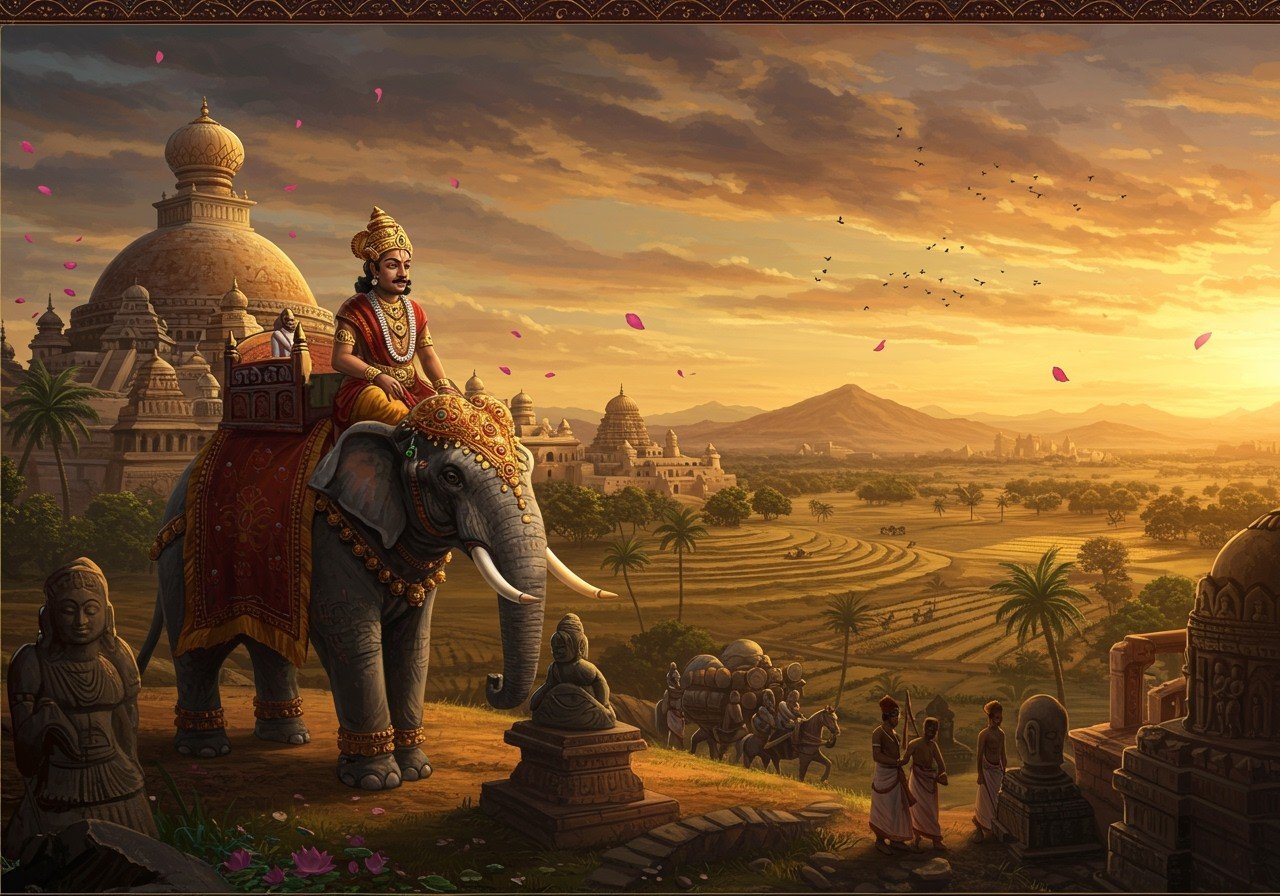
The Deccan region, nestled in southern India, boasts a rich and diverse history. The Satavahana dynasty, also known as the Andhras, reigned over this region from the late 2nd century BCE to the early 3rd century CE, leaving an indelible mark on its cultural and political landscape. Understanding the Satavahana dynasty provides valuable insights into the Deccan’s history and its influence on contemporary Indian culture.
Origins of the Satavahana Dynasty
Emerging around the late 2nd century BCE, the Satavahana dynasty’s origins possibly link to the Maurya Empire, particularly after its decline. Their capital, Pratishthana (modern-day Paithan), held a strategic position on trade routes. Early rulers like Simuka and Kanha established the dynasty’s foundation, with inscriptions and coins from their reign offering glimpses into their era. The early Satavahana society absorbed various linguistic and cultural influences, shaping its unique identity.
Expansion and Consolidation of the Satavahana Empire
Under rulers like Gautamiputra Satakarni, the Satavahana dynasty experienced significant expansion. Military campaigns and strategic conquests broadened their territorial reach. Effective administrative strategies were implemented to govern their vast empire. Trade and commerce fueled the empire’s economic prosperity. The Satavahanas extended their patronage to both Buddhism and Hinduism, reflected in their support for stupas, viharas, and other architectural marvels.
Satavahana Influence Across Indian States
The Satavahana dynasty’s influence stretched across several modern-day Indian states:
- Maharashtra: Key archaeological sites stand as testaments to their presence, revealing the dynasty’s impact on the region’s development and cultural heritage.
- Andhra Pradesh: The dynasty significantly impacted the Krishna and Godavari river valleys, shaping the region’s agricultural practices and trade networks.
- Karnataka: Important historical sites like Sannati and Banavasi showcase the dynasty’s reach and influence in the region’s political and cultural landscape.
- Telangana: The renowned Buddhist site of Amaravati stands as a testament to the dynasty’s patronage of Buddhism and its contribution to the region’s spiritual heritage.
- Madhya Pradesh: Regions like Vidisha and Ujjain bear witness to the dynasty’s expansion and its influence on the region’s cultural and political dynamics.
- Goa: Inscriptions and artifacts unearthed in Goa highlight the dynasty’s role in the region’s history and its contribution to the local culture.
Their territory fostered strong cultural and trade connections with neighboring regions, facilitating the exchange of ideas and goods.
Art and Culture During the Satavahana Period
The Satavahana period witnessed remarkable achievements in art and culture. The Amaravati school of sculpture stands as a prime example of their artistic finesse. Contributions to Indian literature enriched both Prakrit and Sanskrit. Architectural marvels like the rock-cut caves at Ajanta and Ellora showcase their engineering prowess. The numerous stupas and viharas built during their reign reflect their support for Buddhism. Studying the art and culture of this era offers a glimpse into the sophisticated life of ancient Deccan society.
Connecting with Satavahana Heritage through Poojn.in
Poojn.in, India’s leading online store for cultural and religious goods, offers a unique opportunity to connect with the rich heritage of the Satavahana period. Explore our curated collection of traditional puja items, handcrafted with authenticity and reverence:
- Shiva Lingam and Nandi Sets: Honor Lord Shiva, a deity revered since ancient times, with these exquisitely crafted sets. Available in various sizes and materials.
- Clay Pots and Vessels: Experience the traditional way of cooking and performing rituals with authentic clay pots, similar to those used in ancient Deccan households.
- Hand-Printed Puja Thalis: Enhance your puja ceremonies with beautifully designed thalis, adorned with traditional motifs and symbols.
With pan-India delivery and a user-friendly mobile app, Poojn.in brings the sacred traditions of the Deccan to your doorstep. Experience the rich spiritual heritage of the Satavahana era through our authentic puja items.
The Enduring Legacy of the Satavahanas
The Satavahana dynasty’s legacy continues to resonate in the Deccan region and beyond. Their contributions to political stability, cultural enrichment, and economic progress laid the groundwork for subsequent dynasties. Their art, architecture, and literature remain subjects of admiration and scholarly study, providing invaluable insights into ancient Deccan society. We remember the Satavahanas as pioneers who shaped the trajectory of history in southern India. Their legacy endures in the region’s rich cultural tapestry, reminding us of the importance of preserving and cherishing our heritage. By exploring the past, we gain inspiration and pride in our ancestors’ accomplishments, guiding us towards a future that honors tradition while embracing modernity.
Explore more about ancient Indian dynasties and their cultural significance:
- Kandariya Mahadeva Temple: Religious Importance and History
- Badami Cave Temples: Chalukya Dynasty Architecture


